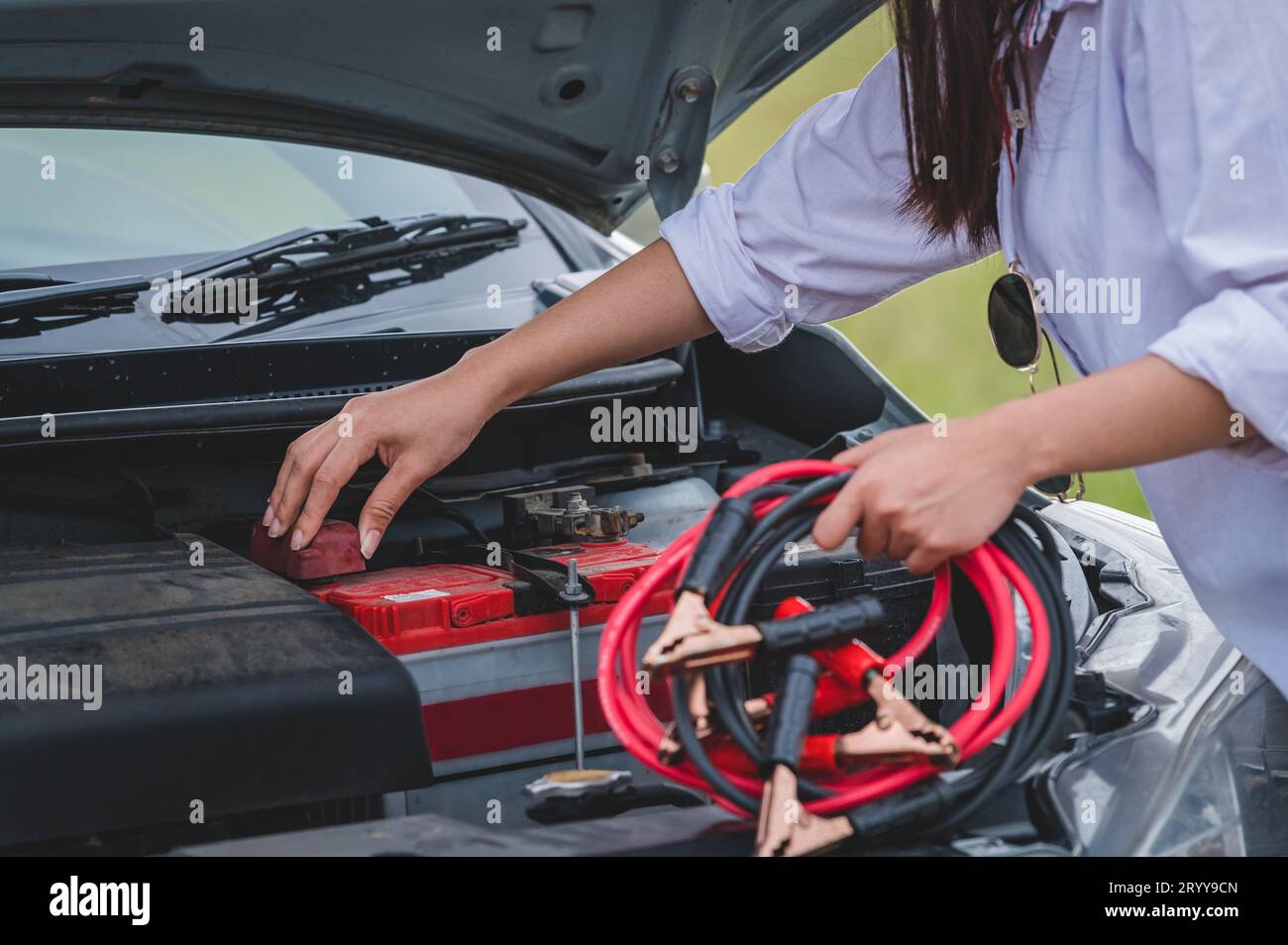
Removing a car battery is a task that many drivers may find themselves confronted with at some point. Whether you are replacing an old battery or troubleshooting a problem, it is imperative to understand the proper procedure to mitigate risks, especially when it comes to safety and vehicle functionality. A primary concern when disconnecting a car battery is determining which cable to remove first. The following guide elucidates this process, emphasizing essential practices and considerations.
To begin with, it is crucial to grasp the basic anatomy of a car battery. Batteries typically feature two terminals: the positive (+) terminal, which is often colored red, and the negative (-) terminal, typically denoted by a black hue. These terminals play pivotal roles in the electrical system of the vehicle, storing and supplying energy as required. Understanding the distinction between these terminals forms the basis for effective battery maintenance.
When it comes to removing a car battery, the order of cable disconnection holds paramount importance. The widely accepted practice among automotive professionals is to disconnect the negative (-) cable first. There are several reasons underpinning this recommendation:
- Minimizing the Risk of Short Circuits: By removing the negative cable first, the risk of creating a short circuit is significantly diminished. If the positive terminal were to come into contact with any grounded metal component of the vehicle while still attached, it could result in a short circuit, potentially causing sparks or even a fire.
- Establishing a Safety Protocol: Disconnecting the negative cable first establishes a foundation for a safe protocol during battery repairs or replacements. This method allows for a systematic approach, thereby ensuring that the technician or driver does not inadvertently cause an electrical hazard.
- Preventing Electrical Damage: In the case of vehicles replete with sensitive electronic systems, disconnecting the negative terminal first helps in safeguarding against inadvertent electrical damage. Since the negative side is connected to the vehicle’s body, removing it first isolates the battery’s current flow.
Once the negative cable has been successfully detached, attention should turn to the positive cable. This is the point where caution is still vital. When detaching the positive cable, ensure that no metal tools or objects come into contact with the terminal or surrounding areas to further prevent any unintended electrical shocks.
Moreover, when reattaching the cables, the procedure should be inverted. The positive cable should be connected first followed by the negative cable. This sequence not only aligns with safety protocols but also promotes efficient energy transfer within the vehicle’s electrical system.
In addition to understanding the sequence of cable disconnection, it is equally important to consider various types of batteries and their requirements. The two most common types of automotive batteries are lead-acid batteries and absorbed glass mat (AGM) batteries. Both types adhere to the standard connection and disconnection protocols addressed earlier; however, AGM batteries often require more meticulous care due to their more sensitive composition.
As an ancillary aspect, proper maintenance of battery terminals is essential to ensure operational efficiency. Corrosion can accumulate on battery terminals, which can impede electrical flow. A diluted mixture of baking soda and water can effectively neutralize corrosion. Applying this mixture, followed by a thorough rinsing and drying, not only enhances terminal conductivity but also prolongs battery life. Keeping terminals clean is a significant aspect of overall battery maintenance.
Drivers should also remain cognizant of additional safety precautions when engaging in this maintenance activity. Always wear protective gear, including gloves and safety glasses, to prevent injury from acid burns or electrical shocks. Working in a well-ventilated area is equally crucial—batteries can emit explosive gases that pose hazards if not dissipated adequately.
Furthermore, to guarantee an optimal outcome, inspecting the integrity of the new battery and its compatibility with the vehicle is vital before installation. A mismatch can cause performance inefficiencies or even damage to the vehicle’s electrical system.
In summary, when faced with the task of removing a car battery, the initial step should always involve detaching the negative cable, followed by the positive cable. This order is paramount for ensuring safety while minimizing the risk of electrical mishaps. Additionally, incorporating regular maintenance practices, understanding the distinctions among battery types, and adhering to safety protocols can augment the longevity and efficiency of your vehicle’s battery system. These considerations form the cornerstone of responsible car maintenance, leading to a more reliable and safer driving experience.
